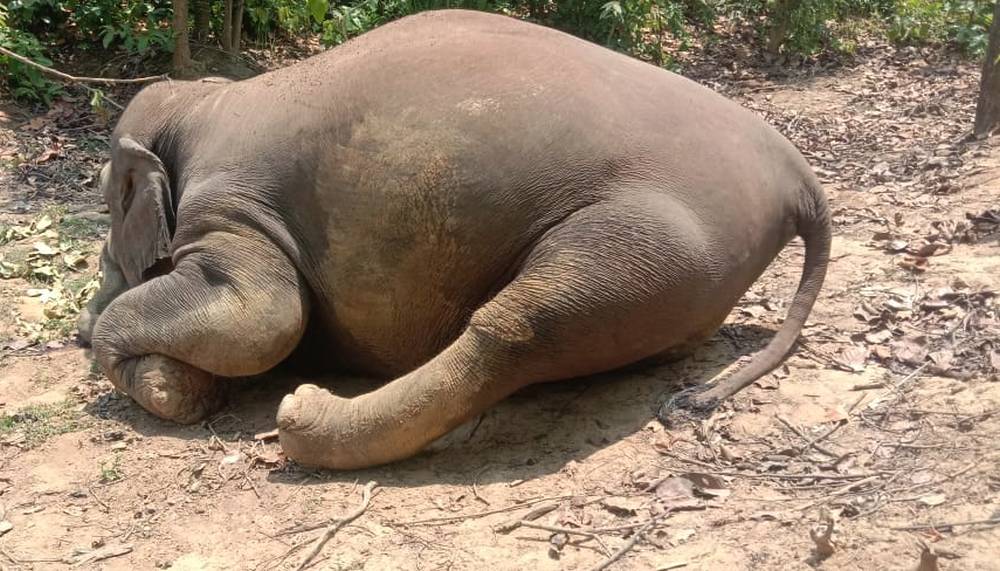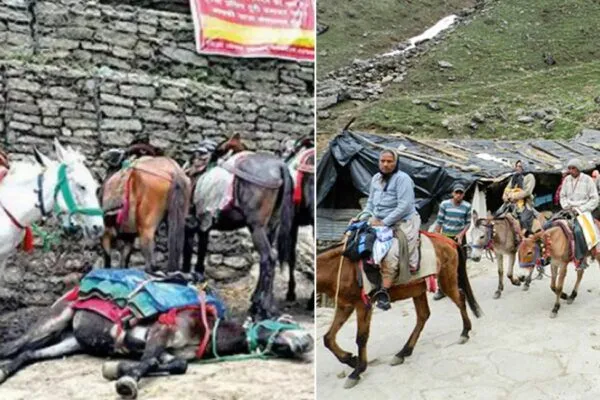Three Elephants Found Dead Within Three Days in Chhattisgarh
While the whole world seems to be rejoicing the refreshed wildlife, wild species in India have been injured, maimed, or killed with utter brutality. Recently, three wild elephants, including one who was 20 months pregnant, were found dead within three days in the northern districts of Chhattisgarh.
The cause of death of the third elephant, whose carcass was found on June 11, is yet to be determined, while the senior forest officer suspects foul play.
2 young female elephants poisoned at , Pratap Pur Range, Ganeshpur Village, Soorajpur Forest Division, Chhatisgarh since yesterday. One of them was nearly full term pregnant.
Forest Dept is yet to send viscera for toxicology exam.
Wildlife seems to have no future in this country. pic.twitter.com/kc7oKdQjDh— gauri maulekhi (@gauri_maulekhi) June 10, 2020
On June 9, the forest officials in Surajpur district discovered the body of a pregnant elephant which was nearing full term.
A senior officer said,
Her postmortem report clarified that she had cysts on her liver which was infected.
On June 10, the carcass of another female elephant was discovered at a distance of 300 meters from the first one, in Pratappur range. The forest officials recovered the body of the dead animal till the next morning as the herd was guarding it for hours. The third carcass was found in the Gopalpur area in Balrampur district.
By 5:00 am, the herd started to thin out and we retrieved the body. Postmortem is going on, but the cause of death is not natural, as the animal was healthy. Prima facie, it looks to be a case of poisoning. We can’t say anything about the third animal, or its cause of death, but we are tracking if it was part of the same herd.
Additional Principal Chief Conservator of Forests (Wildlife) Arun Kumar Pandey said.
All the three dead jumbos were females and probably belonged to the same herd. The cause of their deaths also seems to be the same. The post-mortem of the carcass of the third elephant is being done. However, prima facie the post-mortem reports of the first two pachyderms and symptoms of the third one suggest that these deaths are not natural and they died of toxicity.
He further added.
According to Pandey, the preliminary information reveals that this herd of pachyderms recently moved towards the Pratappur forest from Rajpur, during which they rampaged some mud houses in a village. It is suspected that they might have overeaten mahua flowers or consumed urea (fertilizer) stocked by villagers in their houses that led to toxicity.

Three elephants, including a pregnant one, have died in Chhattisgarh in three days | Image: Gauri Maulekhi/Twitter
As the forest officials suspect the animals were poisoned, samples of the water body in Surajpur, where the herd was spotted, have been taken for testing.
Divisional Forest Officer Pranay Mishra said that upon receiving the news from locals about the carcass, the forest officials rushed to the spot. He said,
No injury mark was found on the carcass of the elephant, which seems to have died two-three days ago. The exact reason of the death will be known once we get the post-mortem report.
According to Mishra, the animals belonged to a herd of 18 elephants that destroyed some mud houses in Karwa village before they moved towards Pratappur on June 6-7. The forest officials have initiated a probe in the villages, from where the herd had crossed, to trace what they had consumed that led to the deaths of three elephants.
These deaths come after several in a row. First, the pregnant elephant in Kerala was killed after it ate a firecracker-filled pineapple, placed by locals to kill wild boars, who are declared vermin in the state. After this incident, a previous case came to light, where a pregnant cow had been fed with an explosive-filled wheat flour ball, blowing its jaw off.
As the country was still raged about these brutal incidents, 12 members of the Narikuravar community killed a jackal by using meat wrapped explosives.
Now, three elephants have been found dead in Chhattisgarh within three days have stirred the rage and worry of not only wildlife conservationists but of the common man as well.
Many states where elephants are found in ample numbers, human-elephant conflicts have become quite common. In the past few years, various incidents of such conflict have been reported from the forests of northern Chhattisgarh, comprising Surguja, Korba, Balrampur, Surajpur, Raigarh, Jashpur, and Koriya districts.
Via: News 18


